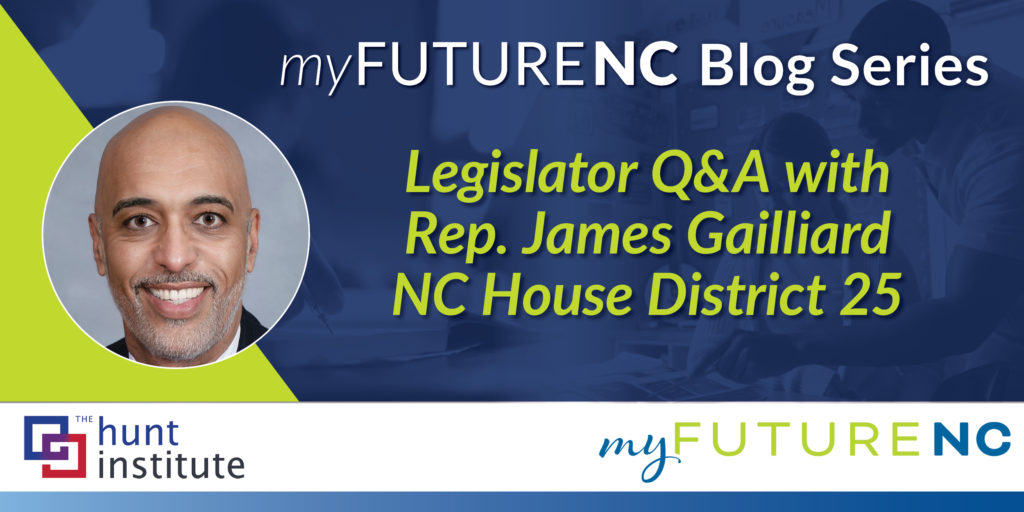

November 18, 2020

Communities across North Carolina are working hard to drive postsecondary attainment at the local level. We spoke with Representative James Gailliard of NC House District 25 to learn more about how his home district of Nash County is working to achieve myfutureNC’s ambitious postsecondary attainment goal.
1. How did your time on the myFutureNC Commission inform your work now as a member of the legislature?
The role a community plays in supporting its students and families has always been my focus, and the myFutureNC Commission did a nice job bringing together all of the voices that make up our communities in North Carolina. In facilitating discussions with educators, policymakers, leaders from the faith and nonprofit communities, and philanthropists, we were really able to talk about the challenges facing our students, and how those challenges impact postsecondary completion. Our Commission meetings provided a great opportunity for me to learn more about the current attainment landscape across North Carolina. These conversations and relationships have been important in deepening my understanding of the needs and opportunities that exist across the state.
2. What do you see as the biggest challenges to increasing postsecondary attainment in your district?
Our students need a strong academic foundation, starting with access to high-quality early childhood education and continuing through a rigorous K-12 experience to prepare them for future success. In 2019, 54% of our schools in Nash County were classified as low-performing. Our schools are struggling with longstanding resource deficits that continue to impact our ability to provide high quality instruction.
These issues are currently being exacerbated by the COVID-19 pandemic. While school closures and blended learning are necessary to keep our community safe, I see so many families struggling. Beyond test scores and standardized testing metrics, our students need flexible, integrated, and personalized learning environments.
To help our community bounce back and ensure that we have a workforce ready to meet the needs of businesses, we need greater investments in college and career resources to prepare our students during their transitions to higher education and throughout their postsecondary journey. Our students need a system of supports that can help them through completing college applications and the FAFSA, and then in enrolling in postsecondary education and earning their degree or credential. Partnerships with community-based organizations are instrumental in providing mentorship and support to students throughout this journey.
3. You have worked extensively to build community partnerships that support students and families. What role does community support play in increasing students’ postsecondary attainment?
Community is critical in supporting our students’ educational success. We all have a responsibility to each other and to the children in this district. In our rural community, the strong connections among families, schools, faith-based and community-based organizations, and businesses can support pathways to postsecondary education and attainment for our kids. Community partnerships promote both family and community involvement in children’s education as districts encourage parental engagement and provide leadership opportunities. It is fundamental for schools to involve families and community members in students’ school experiences in order to establish relationships and understand the individual needs of their students both in and out of school. These partnerships prepare parents and community members to be advocates who promote and encourage the future success of our students, and our community.